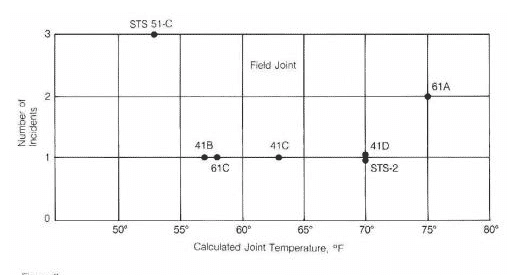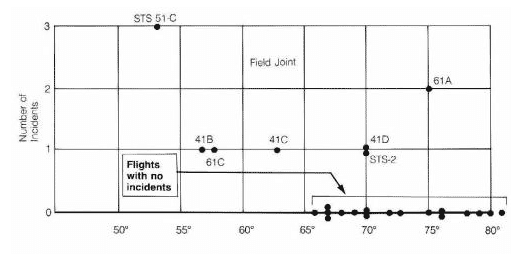In 1986, the U.S. space shuttle Challenger exploded several minutes after launch. A later investigation found that the cause of the disaster was O-ring failure, due to cold temperatures. The temperature at launch was 39 degrees, colder than any prior launch. The cold caused the O-rings to become stiff and brittle, losing the flexibility that allowed them to make a tight seal. This issue had actually been examined prior to launch, and decision-makers decided, in the end, to go ahead with the launch. Instrumental in their decision was a review of previous cases of O-ring failure. In this figure, you can see that there does not appear to be much relationship between temperature and O-ring failure.

However, the picture changes when you include all the flights where there was NO failure:
All the flights that took place at 65 degrees or colder experienced a failure, none of the flights that took place at 76 degrees or above experienced a failure. Analysis that excluded the latter flights was a clear case of selection bias. For some involved it may have been innocent, perhaps a result of lack of comfort with basic statistics. For others, it may have a more willful search for friendly data, born of a desire to bolster the case for “carrying on with the launch.”
[These figures are from Report of the Presidential Commission on the Space Shuttle Challenger Accident (the Rogers Report), and have been widely cited, including in “The Value of Data” in Open Mind (posted online Dec. 14, 2011).]
